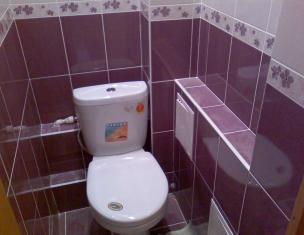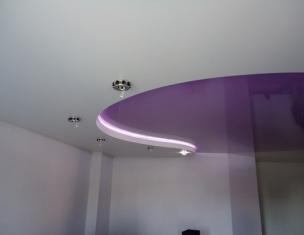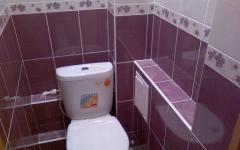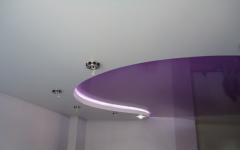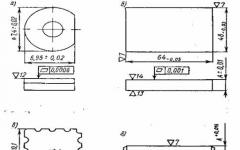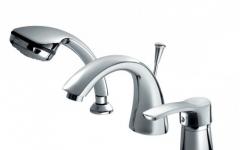She entered our house relatively recently. Today it is no longer possible to imagine daily life without this diligent and unpretentious assistant.
Operating principle of a microwave oven
We all know that microwave ovens work mainly with water molecules. There are many of them in all products. Molecules begin to move under the influence of microwaves. This happens according to the laws of physics. As the molecules move, they collide, releasing heat. This is the principle of operation of a microwave oven.
In order for consumers to better understand the capabilities of their electrical appliance, company representatives often give this example. If you rub your palms together hard, they will heat up. However, the heat will not spread to the shoulders, neck and entire body. The operating principle of a microwave oven is similar. It cannot heat food deeply.
From theory to practice
From reasoning in the field of physics it is easy to move on to cooking. Food in a microwave oven becomes hot around the edges. Next, the physical principle of thermal conductivity comes into play. The middle part of your dish will heat up from contact with the “hot” molecules located around the edges.
What happens if you try to cook a large piece of meat on maximum power? Its edges will become edible, but the middle will be raw. It is better to set the power to medium. Then the molecules close to radiation will not heat up so quickly. And the middle of the piece will calmly reach readiness.
Safety precautions
We all know from childhood that it is strictly forbidden to put pans with plastic handles in the oven, and glassware cannot be placed on a gas stove. These rules are also based on the laws of physics. However, most often we do not think about them. We simply follow basic, but very important, safety measures.
Microwave cookware should be special. It is necessary to clearly understand the basic rules for choosing the material from which it is made. Then your electrical appliance will serve for a long time, and your family and friends will definitely thank you for the tasty and healthy dishes.
Iron is prohibited!
The first rule is no metal! It's taboo. Metal utensils are completely useless. It does not allow microwaves to pass through. It will not be possible to heat food in it. Moreover, such dishes are also dangerous. Microwaves in contact with metal produce high frequency current. Sparks fly in the oven chamber and a loud crack is heard. The same effect is caused by individual metal parts of dishes, including dyes that contain lead or zinc.
Are you still using your grandma's gold-plated plates? They are not microwave safe! Modern tableware with bright patterns may also contain metallic dyes. They are not shiny, so they are difficult to recognize. To avoid problems, make it a rule to use only those products that have a minimal amount of paint on them. It's best if your porcelain plates are white.

Vigilance first
Microwave dishes are painted only on the outside. It is better not to place silumin plates in a microwave oven. Dishes made from this material resemble porcelain. However, it is not that heavy. Silumin cookware looks beautiful and modern. Therefore, housewives often give it preference. However, such products melt quickly; it is better not to place them in the microwave.
It happens that some absent-minded housewives put a plate with a fork in the microwave oven. It’s good if they manage to turn off the electrical appliance after the first sparks. Children must be monitored especially carefully. Kids are so proud of being allowed to heat their own food that they forget about safety. Only after making sure that the child is neat and attentive can you leave him alone with an electrical appliance.
Balls, wrappers, plastic, ceramics and clay
Microwave dishes must be heat-resistant. Therefore, you should not put plastic or cardboard in the oven for a long time. Sometimes we buy ready-made food in paper bags. Before heating such a dish, you need to remove the wrapper from it. Often products are sold in cellophane bags. Such packaging must be removed before placing food in the oven. It is dangerous to reheat food in plastic containers. Cheap, low-quality materials contain substances that, when exposed to heat, acquire properties harmful to the body.
Microwave dishes should not be crystal. This material contains lead and silver. Cut crystal is not uniform, and uneven heating can cause a voltage spike. Products made of porous ceramics or clay are also unsuitable for microwave ovens. These materials do not transmit microwaves well. Such dishes become very hot, but their contents remain cold.

Open the lids
Do not place sealed containers in the microwave. It doesn't matter what material they are made of. Under the influence of heat energy, the contents of such dishes can rupture from the inside. Before placing a glass jar in the oven, be sure to remove the lid. For the same reason, you should not heat eggs and nuts in the microwave. They will explode. Tomatoes, sausages and other foods with thick skins should be pierced with a fork before cooking. Then the hot steam will come out. You cannot turn on an empty microwave oven. Without encountering an obstacle, the microwaves will be reflected repeatedly from the metal walls of the chamber. This will damage the electrical appliance.
So, what dishes can you put in the microwave? If you are going to reheat ready-made food, it is best to do it directly in a regular porcelain plate. The container can be glass or made of special heat-resistant plastic.
![]()
Combined modes
Some housewives think that you should only heat food in a microwave oven. This is wrong. Electrical appliances are designed for complete cooking. Especially when microwave ovens are equipped with a grill. If you need to turn on microwaves and convection at the same time, then you should be especially careful when choosing a container.
When using the combined mode, the question often arises: “What dishes can be put in the microwave?” A lot depends on the recipe. It usually indicates the type of cookware that is best used for a particular dish. Please remember that containers designed for microwaves are not always suitable for grilling, and vice versa. Before starting food preparation, carefully inspect the utensils. Are there any cracks? Damaged products cannot be placed in a microwave oven. They may break when heated.

Strained glass
What kind of dishes should be used for the microwave? The glass fits perfectly. This material transmits microwaves better than all others. However, the glass must be durable and tempered. You've probably seen microwave oven utensils made from this material. And they noticed that its walls were quite thick. You can cook food in such dishes. It will not crack or break. But it is better not to use ordinary glasses, goblets and shot glasses. Thin glass is not heat resistant. As a last resort, you can slightly warm the drink in a glass.
So, you already understand what material microwave cookware should be made of. Glass is better suited for this purpose than any other. But you only need to choose heat-resistant dishes. It is easily identified by its thick walls. This container is also convenient because you can monitor the degree of readiness of the dish.

Utensil shape
When buying cookware in a store, pay attention to the labeling. Well-known companies always note whether the plate or bowl can be used in the microwave. The dishes are usually marked with a picture or a corresponding word. It is best to use round containers with smooth walls. They heat food evenly. You should not buy a product in which the walls at the bottom (near the bottom) are narrower than at the top.
If you are preparing food in a special container, you should cover it with a lid. The container should not be sealed. Typically, dishes intended for microwave ovens are sold with lids made of the same material. You can also cover the container with a plate.
What dishes can be put in the microwave? Glass, porcelain, earthenware. Ceramic containers can be used if they are completely covered with glaze. And only if there are no cracks. Such dishes will withstand quite high temperatures. If food needs to be warmed up a little, you can use plastic and paper packaging. The exception is cardboard boxes with a metal layer. These sell milk and juices. 
Beware of temperature changes
Microwave-safe glass dishes work best. But it’s more convenient to cook in light plastic containers. They cannot be broken, so even a child can use such plates and bowls. However, choose heat-resistant plastic. Containers must be marked accordingly.
Microwave cookware should not be exposed to sudden and sudden changes in temperature. For example, you cannot take a plate out of the freezer and immediately put it in the microwave. This is especially true for glass and porcelain products. Plastic tolerates temperature changes more easily. The material must be of high quality. It is not advisable to cook dishes with a high content of water, fat or sugar in plastic containers. Containers may become very hot and become deformed.

Sizes of bowls and pans
What dishes should I put in the microwave? For microwave ovens, not only the material and shape are important, but also the height of the containers. It should be larger than in ordinary pots, saucepans and frying pans. Remember a simple rule. Microwave dishes should be higher than containers in which food is cooked on electric and gas burners. Lids cannot close tightly. Some companies produce dishes suitable for microwaves and grills. It can withstand high temperatures. True, such containers are very expensive.
Microwaveable dishes are usually not used in the oven. An exception are pans made of special glass-ceramic alloys. But they are very expensive. If you cook soup, porridge or pasta in a microwave oven, choose dishes with inclined walls. In such pans, water will not splash out. Similar containers should only be used for liquid dishes. Solid food will not heat evenly in them.
Can microwave cookware be used in the oven? Yes, but only certain types of pots and plates made from special alloys. These are products from well-known companies, so they are very expensive. Often we do not know exactly what material the dishes are made of. For example, ordinary heat-resistant ceramics and fire-resistant ceramics that can withstand temperatures over three hundred degrees look almost the same. If you are not sure of your choice, do not take risks. It is better to place a regular metal baking sheet with a non-stick coating in the oven.



